Planning worship?
Check out our sister site, ZeteoSearch.org,
for 20+ additional resources related to your search.
- |
User Links
Person Results
‹ Return to hymnal
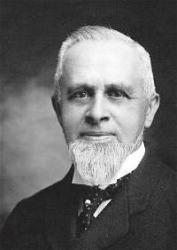
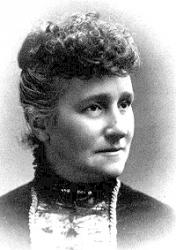

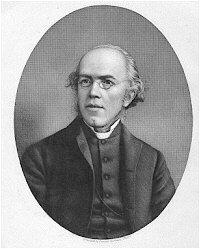

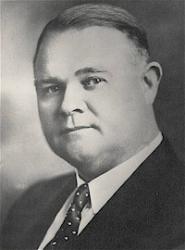

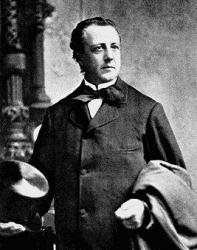
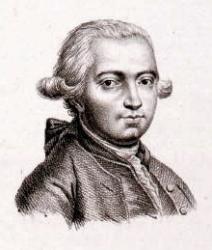
Export as CSV
W. Howard Doane

1832 - 1915 Person Name: W. H. Doane Hymnal Number: 118 Composer of "[More love to Thee, O Christ!]" in The Church School Hymnal An industrialist and philanthropist, William H. Doane (b. Preston, CT, 1832; d. South Orange, NJ, 1915), was also a staunch supporter of evangelistic campaigns and a prolific writer of hymn tunes. He was head of a large woodworking machinery plant in Cincinnati and a civic leader in that city. He showed his devotion to the church by supporting the work of the evangelistic team of Dwight L. Moody and Ira D. Sankey and by endowing Moody Bible Institute in Chicago and Denison University in Granville, Ohio. An amateur composer, Doane wrote over twenty-two hundred hymn and gospel song tunes, and he edited over forty songbooks.
Bert Polman
============
Doane, William Howard, p. 304, he was born Feb. 3, 1832. His first Sunday School hymn-book was Sabbath Gems published in 1861. He has composed about 1000 tunes, songs, anthems, &c. He has written but few hymns. Of these "No one knows but Jesus," "Precious Saviour, dearest Friend," and "Saviour, like a bird to Thee," are noted in Burrage's Baptist Hymn Writers. 1888, p. 557.
--John Julian, Dictionary of Hymnology, Appendix, Part II (1907)
===================
Doane, W. H. (William Howard), born in Preston, Connecticut, 1831, and educated for the musical profession by eminent American and German masters. He has had for years the superintendence of a large Baptist Sunday School in Cincinnati, Ohio, where he resides. Although not a hymnwriter, the wonderful success which has attended his musical setting of numerous American hymns, and the number of his musical editions of hymnbooks for Sunday Schools and evangelistic purposes, bring him within the sphere of hymnological literature. Amongst his collections we have:—
(1) Silver Spray, 1868; (2) Pure Gold, 1877; (3) Royal Diadem, 1873; (4) Welcome Tidings, 1877; (5) Brightest and Best, 1875; (6) Fountain of Song; (7) Songs of Devotion, 1870; (8) Temple Anthems, &c.
His most popular melodies include "Near the Cross," "Safe in the Arms of Jesus," "Pass me Not," "More Love to Thee," "Rescue the Perishing," "Tell me the Old, Old Story," &c.
- John Julian, Dictionary of Hymnology (1907)
W. Howard Doane
Phoebe Palmer Knapp

1839 - 1908 Person Name: Mrs. Jos. F. Knapp Hymnal Number: 145 Composer of "[Blessed assurance, Jesus is mine!]" in The Church School Hymnal As a young girl Phoebe Palmer Knapp (b. New York, NY, 1839; d. Poland Springs, ME, 1908) displayed great musical talent; she composed and sang children’s song at an early age. The daughter of the Methodist evangelist Walter C. Palmer, she was married to John Fairfield Knapp at the age of sixteen. Her husband was a founder of the Metropolitan Life Insurance Company, and after his death, she shared her considerable inherited wealth with various charitable organizations. She composed over five hundred gospel songs, of which the tunes for “Blessed Assurance” and “Open the Gates of the Temple” are still popular today.
Bert Polman
Phoebe Palmer Knapp
Mary A. Lathbury

1841 - 1913 Hymnal Number: 18 Author of "Day is Dying in the West" in The Church School Hymnal Lathbury, Mary Ann, was born in Manchester, Ontario County, New York, Aug. 10, 1841. Miss Lathbury writes somewhat extensively for the American religious periodical press, and is well and favourably known (see the Century Magazine, Jan., 1885, p. 342). Of her hymns which have come into common use we have:—
1. Break Thou the bread of life. Communion with God. A "Study Song" for the Chautauqua Literary and Scientific Circle, written in the summer of 1880. It is in Horder's (Eng.) Congregational Hymns, 1884.
2. Day is dying in the west. Evening. "Written at the request of the Rev. John H. Vincent, D.D., in the summer of 1880. It was a "Vesper Song," and has been frequently used in the responsive services of the Chautauqua Literary and Scientific Circle." It is in the Laudes Domini, N. Y., 1884.
For these details we are indebted to S. W. Duffield's English Hymns, &c, N. Y., 1886.
--John Julian, Dictionary of Hymnology (1907)
==================
Lathbury, Mary A., p. 640, i. Another hymn by this writer is, "Lift up, lift up thy voice with singing." [Praise to Christ), in Sankey's Sacred Songs & Solos, 1878.
--John Julian, Dictionary of Hymnology, Appendix, Part II (1907)
Mary A. Lathbury
Frederick Whitfield

1829 - 1904 Person Name: Rev. Frederick Whitfield Hymnal Number: 86 Author of "I Need Thee, Precious Jesus" in The Church School Hymnal Whitfield, Frederick, B.A., son of H. Whitfield, was born at Threapwood, Shropshire, Jan. 7, 1829, and educated at Trinity College, Dublin, where he took his B.A. in 1859. On taking Holy Orders, he was successively curate of Otley, vicar of Kirby-Ravensworth, senior curate of Greenwich, and Vicar of Stanza John's, Bexley. In 1875 he was preferred to St. Mary's, Hastings. Mr. Whitfield's works in prose and verse number upwards of thirty, including Spiritual unfolding from the Word of Life; Voices from the Valley Testifying of Jesus; The Word Unveiled; Gleanings from Scripture, &c. Several of his hymns appeared in his Sacred Poems and Prose, 1861, 2nd Series, 1864; The Casket, and Quiet Hours in the Sanctuary. The hymn by which he is most widely known is I need Thee, precious Jesu.” Other hymns by him in common use include:~
1. I have a Great High Priest above. Christ the High Priest.
2. I saw the Cross of Jesus. The Cross.
3. In spirit, Lord, we meet Thee now. Missions. This was written at the request of the Committee of the Irish Church Missions for one of their annual meetings in London.
4. Jesus, Thou Name of magic power. The Name of Jesus. Sometimes given as "Jesus, Thou Name of power divine."
5. The sprinkled blood is speaking. The Blood of Christ.
6. There is a day I long to see. Heaven Anticipated.
7. There is a Name I love to hear. The Name of Jesus. Published in 1855 in hymnsheets and leaflets in various languages. From this the hymn “Jesus, the Name I love so well" is taken.
8. There's naught on earth to rest upon. God Unchangeable.
9. When dead in sin and far from God. Redemption.
All these hymns, with the exception of No. 3, are in his Sacred Poems and Prose, 1861, and several of them have been printed as leaflets, and set to special music. The Sacred Poems, &c, contains 26 hymns, some of which are of considerable merit.
-- John Julian, Dictionary of Hymnology (1907)
Frederick Whitfield
William Walsham How

1823 - 1897 Person Name: Bp. William Walsham How Hymnal Number: 93 Author of "O Jesus, Thou Art Standing" in The Church School Hymnal William W. How (b. Shrewsbury, Shropshire, England, 1823; d. Leenane, County Mayo, Ireland, 1897) studied at Wadham College, Oxford, and Durham University and was ordained in the Church of England in 1847. He served various congregations and became Suffragan Bishop in east London in 1879 and Bishop of Wakefield in 1888. Called both the "poor man's bishop" and "the children's bishop," How was known for his work among the destitute in the London slums and among the factory workers in west Yorkshire. He wrote a number of theological works about controversies surrounding the Oxford Movement and attempted to reconcile biblical creation with the theory of evolution. He was joint editor of Psalms and Hymns (1854) and Church Hymns (1871). While rector in Whittington, How wrote some sixty hymns, including many for children. His collected Poems and Hymns were published in 1886.
Bert Polman
===============
How, William Walsham, D.D., son of William Wybergh How, Solicitor, Shrewsbury, was born Dec. 13, 1823, at Shrewsbury, and educated at Shrewsbury School and Wadham College, Oxford (B.A. 1845). Taking Holy Orders in 1846, he became successively Curate of St. George's, Kidderminster, 1846; and of Holy Cross, Shrewsbury, 1848. In 1851 he was preferred to the Rectory of Whittington, Diocese of St. Asaph, becoming Rural Dean in 1853, and Hon. Canon of the Cathedral in 1860. In 1879 he was appointed Rector of St. Andrew's Undershaft, London, and was consecrated Suffragan Bishop for East London, under the title of the Bishop of Bedford, and in 1888 Bishop of Wakefield. Bishop How is the author of the Society for Promoting Christian Knowledge Commentary on the Four Gospels; Plain Words , Four Series; Plain Words for Children; Pastor in Parochia; Lectures on Pastoral Work; Three All Saints Summers, and Other Poems , and numerous Sermons , &c. In 1854 was published Psalms and Hymns, Compiled by the Rev. Thomas Baker Morrell, M.A., . . . and the Rev. William Walsham How, M.A. This was republished in an enlarged form in 1864, and to it was added a Supplement in 1867. To this collection Bishop How contributed several hymns, and also to the S. P. C. K. Church Hymns , of which he was joint editor, in 1871. The Bishop's hymns in common use amount in all to nearly sixty.
Combining pure rhythm with great directness and simplicity, Bishop How's compositions arrest attention more through a comprehensive grasp of the subject and the unexpected light thrown upon and warmth infused into facia and details usually shunned by the poet, than through glowing imagery and impassioned rhetoric. He has painted lovely images woven with tender thoughts, but these are few, and found in his least appreciated work. Those compositions which have laid the firmest hold upon the Church, are simple, unadorned, but enthusiastically practical hymns, the most popular of which, "O Jesu, Thou art standing"; "For all the Saints who from their labours rest," and "We give Thee but Thine own," have attained to a foremost rank. His adaptations from other writers as in the case from Bishop Ken, "Behold, the Master passeth by," are good, and his Children's hymns are useful and popular. Without any claims to rank as a poet, in the sense in which Cowper and Montgomery were poets, he has sung us songs which will probably outlive all his other literary works.
The more important of Bishop How's hymns, including those already named, and "Lord, Thy children guide and keep"; "O Word of God Incarnate"; "This day at Thy creating word"; "Who is this so weak and helpless"; and others which have some special history or feature of interest, are annotated under their respective first lines. The following are also in common use:—
i. From Psalms & Hymns, 1854.
1. Before Thine awful presence, Lord. Confirmation.
2. Jesus, Name of wondrous love [priceless worth]. Circumcision. The Name Jesus .
3. Lord Jesus, when we stand afar. Passiontide.
4. O blessing rich, for sons of men. Members of Christ.
5. 0 Lord of Hosts, the earth is Thine. In time of War.
6. O Lord, Who in Thy wondrous love. Advent.
ii. From Psalms & Hymns, enlarged, 1864.
7. Lord, this day Thy children meet. Sunday School Anniversary.
iii. From Supplement to the Psalms & Hymns, 1867.
8. Hope of hopes and joy of joys. Resurrection.
9. 0 daughters blest of Galilee. For Associations of Women.
10. O happy feet that tread. Public Worship.
11. With trembling awe the chosen three. Transfiguration.
iv. From Parish Magazine, 1871, and Church Hymns, 1871.
12. O Jesu, crucified for man. Friday.
13. Yesterday, with worship blest. Monday.
v. From the S. P. C. K. Church Hymns. 1871.
14. Bowed low in supplication. For the Parish.
15. Great Gabriel sped on wings of light. Annunciation, of the Blessed Virgin Mary.
16. O blest was he, whose earlier skill. St. Luke.
17. O God, enshrined in dazzling light. Omnipresence. Divine Worship .
18. O heavenly Fount of Light and Love. Witsuntide.
19. O Lord, it is a blessed thing. Weekdays.
20. 0 One with God the Father. Epiphany.
21. O Thou through suffering perfect made. Hospitals.
22. Rejoice, ye sons of men. Purification of the B. V. M.
23. Summer suns are glowing. Summer.
24. The year is swiftly waning. Autumn.
25. Thou art the Christ, O Lord. St. Peter.
26. To Thee our God we fly. National Hymn.
27. Upon the holy Mount they stood. Transfiguration and Church Guilds.
28. We praise Thy grace, 0 Saviour. St. Mark.
vi. From the S. P. C. K. Children's Hymns, 1872.
29. Behold a little child. Jesus the Child's Example.
30. Come, praise your Lord and Saviour. Children's Praises.
31. It is a thing most wonderful. Sunday School Anniversary.
32. On wings of living light. Easter.
Bishop How's hymns and sacred and secular pieces were collected and published as Poems and Hymns, 1886. The Hymns, 54 in all, are also published separately. He d. Aug. 10, 1897.
--John Julian, Dictionary of Hymnology (1907)
===================
How, W. W., p. 540, i. He died Aug. 10, 1897. His Memoir, by F. D. How, was published in 1898.
--John Julian, Dictionary of Hymnology, New Supplement (1907)
William Walsham How
Luther B. Bridgers

1884 - 1948 Person Name: L. B. B. Hymnal Number: 103 Author of "He Keeps Me Singing" in The Church School Hymnal Luther Burgess Bridgers Born at Margarettsville, NC, son of a minister who conducted revival meetings, he assisted his father conducting meetings (1904-1913). He attended Asbury College at Wilmore, KY, and met his wife, Sarah Jane (Sallie) Veatch in 1905 while there. They had three sons: Luther Hughes, Allen Veatch, and James Marvin. He pastored Methodist Episcopal congregations in KY, NC, and GA, first pastoring in Perry, FL, before doing evangelistic work. He evangelized in the southern U S. He was also known for his fine singing voice and would sing at each meeting. Tragedy struck while he was conducting a revival in Middlesboro, KY, in 1911. Having left his wife and three sons to visit his wife’s parents while he was away, he learned that they had all perished in a house fire. In 1914 he remarried to Aline Winburn, and they had a son, Luther B Jr. After WW1 he took part in missionary outreaches to Belgium, Czechoslovakia, Poland and Russia. He often spoke to large crowds and saw many come to Christ. In 1914 he was also named ‘General Evangelist’ of his denomination. In 1921 Asbury College awarded him an honorary DD degree for his evangelistic efforts. He pastored at several Methodist churches in the Atlanta, GA, area, then briefly at a Methodist church at Morehead, NC. After his long ministry, ending in 1945, he retired and moved to Gainesville, GA, where he eventually died. He was known as ‘Melody Man’. He penned a number of hymns, eight of which were published in Charlie Tillman’s ‘The Revival No. 6’. His most famous, noted below, borrowed a tune from a popular song of the time, ‘Melody of Love’.
John Perry
Luther B. Bridgers
J. H. Gilmore

1834 - 1918 Hymnal Number: 137 Author of "He Leadeth Me" in The Church School Hymnal Joseph H. Gilmore (b. Boston, MA, 1834; d. Rochester, NY, 1918) Educated at Brown University, Providence, Rhode Island, and Newton Theological Seminary, Newton, Massachusetts, Gilmore was ordained to the Baptist ministry in 1862. He served churches in Fisherville, New Hampshire, and Rochester, New York. In 1868 he was appointed to the English faculty at the University of Rochester, where he served until retirement in 1911. He published various literary works, including Outlines of English and American Literature (1905).
Bert Polman
============
Gilmore, Joseph Henry, M. A., Professor of Logic in Rochester University, New York, was born at Boston, April 29, 1834, and graduated in Arts at Brown University, and in Theology at Newton Theological Institution. In the latter he was Professor of Hebrew in 1861-2. For some time he held a Baptist ministerial charge at Fisherville, New Hampshire, and at Rochester. He was appointed Professor at Rochester in 1868. His hymn, "He leadeth me, O blessed thought" (Ps. xxiii.), is somewhat widely known. It was written at the close of a lecture in the First Baptist Church, Philadelphia, and is dated 1859. It is in the Baptist Hymnal [and Tune] Book, Philadelphia, 1871. [Rev. F. M. Bird, M. A.]
-- John Julian, Dictionary of Hymnology (1907)
J. H. Gilmore
Charles C. Converse

1832 - 1918 Person Name: C. C. Converse Hymnal Number: 130 Composer of "[What a friend we have in Jesus]" in The Church School Hymnal Pseudonyms: Clare, Lester Vesé, Nevers, Karl Reden, Revons
=================================
Charles Crozat Converse LLD USA 1832-1918. Born in Warren, MA, he went to Leipzig, Germany to study law and philosophy, as well as music theory and composition under Moritz Hauptmann, Friedrich Richter, and Louis Plaidy at the Leipzig Conservatory. He also met Franz Liszt and Louis Spohr. He became an author, composer, arranger and editor. He returned to the states in 1859 and graduated from the Albany, NY, Law School two years later. He married Lida Lewis. From 1875 he practiced law in Erie, PA, and also was put in charge of the Burdetta Organ Company. He composed hymn tunes and other works. He was offered a DM degree for his Psalm 126 cantata, but he declined the offer. In 1895 Rutherford College honored him with a LLD degree. He spent his last years in Highwood, NJ, where he died. He published “New method for the guitar”, “Musical bouquet”, “The 126th Psalm”, “Sweet singer”, “Church singer”, “Sayings of Sages” between 1855 and 1863. he also wrote the “Turkish battle polka” and “Rock beside the sea” ballad, and “The anthem book of the Episcopal Methodist Church”.
John Perry
Charles C. Converse
Gerard Moultrie
1829 - 1885 Hymnal Number: 185 Author of "We March, We March to Victory" in The Church School Hymnal Moultrie, Gerard, M.A., son of the Rev. John Moultrie, was born at Rugby Rectory, Sept. 16, 1829, and educated at Rugby and Exeter College, Oxford (B.A. 1851, M.A. 1856). Taking Holy Orders, he became Third Master and Chaplain in Shrewsbury School; Chaplain to the Dowager Marchioness of Londonderry, 1855-59; curate of Brightwaltham, 1859; and of Brinfield, Berks, 1860; Chaplain of the Donative of Barrow Gurney, Bristol, 1864: Vicar of Southleigh, 1869, and Warden of St. James's College, Southleigh,1873. He died April 25, 1885. His publications include:
1) The Primer set forth at large for the use of the Faithful. In Family and Private Prayer. Edited from the Post Reformation editions, 1864. (2) Hymns and Lyrics for the Seasons and Saints' Days of the Church, 1867. The hymns of his sister, Mary Dunlop Moultrie (q.v.), were included in this volume. (3) The Espousals of S. Dorothea and Other Verses, 1870. (5) The Devout Communicant, 1867. (6) Six Years' work in Southleigh, 1875. (7) Cantica Sanctorum, or Hymns for the Black Letter Saints Days in the English and Scottish Calendars, to which are added a few Hymns for Special Occasions, 1880.
Mr. Moultrie's hymns include translations from the Greek, Latin, and German, in addition to original compositions. A large number appeared in the Church Times, and other papers; and many were written for special Saints' Days, and Other Festivals, for the People's Hymnal, 1867, in which some were signed "D. P." (i.e. Desiderius Pastor). The following are in common use:—
i. In The Primer, 1864.
1. Father of all, to Thee we pray. Lord's Prayer.
2. In the Name of God the Father. Laying Foundation Stone. (2nd stanza: "And as on the morning stillness.") First appeared in the Church Times, Oct. 1, 1864, and again (as rewritten for the laying of the foundation stone of St. Margaret's, East Grinstead), July 29, 1865.
ii. In Hymns and Lyrics, 1867.
3. Bishop of the souls of men. St. Matthias.
4. Come, faithful people, come away. Palm Sunday.
5. Easter-day is here, and we. Easter.
6. Heavenly Father, God alone. Harvest.
7. Mother, from whose bosom's veil. St. Anne. July 26.
8. 0 Jesu, 0 Redeemer. St. Luke.
9. Mary, maiden undefiled. Visitation of the Blessed Virgin Mary.
10. Silence reigns at eventide. Whitsuntide. In the Altar Hymnal, 1884, it begins with st. iii., "Hark, a rushing mighty sound."
11. The Marriage feast is ready. All Saints. Usually given in an abbreviated form.
12. Virgin-born the King of heaven. Christmas Midnight Hymn. ("To be sung at the Midnight Cele¬bration.") In the Church Times, Nov. 26, 1864, and revised for Hymns & Lyrics.
13. We march, we march to victory. Processional. In the Church Times, Aug, 19, 1865, and headed "Processional hymn before service (written expressly for use during present troubles)."
14. Who is this that shines so bright! St. Laurence. In the People's Hymnal, 1867.
15. Who keeps his birthday feast tonight? Beheading of St. John Baptist. In the People's Hymnal, 1867.
iii. In The People's Hymnal, 1867.
16. Heart to heart, and side by side. Holy Matrimony.
17. I know that my Redeemer liveth. Burial. A paraphrase of the Responsory in the Roman Office for the Dead.
18. Jesus Christ, we humbly pray. Opening of a School House.
19. Lord of heaven, Whose faithful love. Ember Days.
20. Lord, today we bring to Thee. Reception of a Privately Baptized Child.
21. Lord, we come today to Thee. Choir Festival.
22. 0 God, Who bad'st Thine angel sheathe. National Thanksgiving for restored Public Health. This is given in the Society for Promoting Christian Knowledge Church Hymns, 1871, as "0 God, Whose angel stayed his hand," and in the Hymnary, 1872, as "Lord, Who didst bid Thine angel sheathe."
23. 0 Lord of Hosts, Thou God of might. National Thanksgiving for Peace. In several collections.
24. Sevenfold Spirit, Lord of life. Consecration of a Bishop. First sung at the consecration of an American bishop at New York, in 1867. Included in the author's Espousals of St. Dorothea, 1870.
25. Sounds the bell in solemn cadence. Burial. In The Espousals of S. Dorothea, 1870, p. 82, the note is added, "This hymn was first sung at the funeral of the Rev. Warwick Wroth of Clerkenwell." It is headed "Funeral Hymn for a Priest."
iv. In Cantica Sanctorum, 1880.
26. In the midst of gladness, sorrow. Annunciation in Holy Week.
27. Jesus, tender Shepherd. Holy Communion.
28. Swing the censer, wave the banner. Processional.
v. In The Altar Hymnal, 1884.
29. Our great High Priest is standing. Holy Communion.
30. Lo, the Sacrifice atoning. Holy Communion.
vi. Various.
31. Forward, Christians, forward. Processional. Written for the Church of England Working Men's Society in 1879, and issued as a leaflet, of which 40,000 copies were sold during the first year.
32. Laid in this garden full of bloom. Easter Eve. In the Churchman's Companion, April, 1879.
33. On the wings of the wind fell a hymn from the sky. Christmas. In Husband's Supplemental Hymns, N.D. [1873].
34. Shades of night are falling round us. Evening. Novello & Co., with Music by Shad Frost.
35. There is a sound of rejoicing around the great throne. Processional. Written for St. Michael's Church, Folkestone, and published in E. Husband's Appendix to Hymns Ancient & Modern, N.D. [1873]. It was set to music by Mr. Husband, and is commonly known as "The Folkestone Processional."
36. This is the festal day of jubilation. Sunday School Anniversary. A hymn to be sung alternately by men and boys during the collection, written in 1877 for St. Agnes's, Kennington, London.
37. This is the hour of peace and blest communion. Holy Communion. Written for the English Church Union Commemoration held at St. Agnes's, Kennington Park, London, June 9, 1880.
From the subjects of the hymns noted above it will be seen that Mr. Moultrie wrote principally on matters not usually dealt with by hymnwriters. This is specially the case with his Cantica Sanctorum, in which most of the 103 hymns are for "Black Letter Saints' Days."
--John Julian, Dictionary of Hymnology (1907)
===================
Moultrie, G., p. 771, ii. We find that Mr. Moultrie wrote the preface to the Cantica Sanctorum, 1880, but did not edit the book. He and others contributed some thirteen hymns thereto. It was edited by Miss Isabella Leefe, p. 1663, i., who wrote 90 of the hymns.
--John Julian, Dictionary of Hymnology, New Supplement (1907)
See also in:
Hymn Writers of the Church
Gerard Moultrie
Felice Giardini

1716 - 1796 Hymnal Number: 3 Composer of "ITALIAN HYMN" in The Church School Hymnal Felice Giardini, born in Italy. When young, he studied singing, harpsichord, and violin. He became a composer and violin virtuoso. By age 12 he was playing in theatre orchestras. His most instructive lesson: While playing a solo passage during an opera, he decided to show off his skills by improvising several bravura variations that the composer, Jommelli, had not written . Although the audience applauded loudly, Jomelli, who happened to be there, went up and slapped Giardini in the face. He learned a lesson from that. He toured Europe as a violinist, considered one of the greatest musical artists of his time. He served as orchestra leader and director of the Italian Opera in London, giving concerts. He tried to run a theatre in Naples, but encountered adversity. He went to Russia, but had little fortune there, where he died.
John Perry
Felice Giardini


 My Starred Hymns
My Starred Hymns


